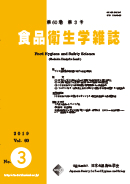
Food Hygiene and Safety Science
metrics 2024
Exploring the Intersection of Food and Health
Introduction
Food Hygiene and Safety Science is a pivotal academic journal published in Japan by the esteemed FOOD HYGIENE & SAFETY. With its ISSN 0015-6426, this journal operates within the broad domains of food science, public health, and medicine, strategically addressing the critical issues surrounding food hygiene and safety. With a notable history spanning from 1960 to 2024, it has become an essential resource in these fields, currently holding a Q3 category ranking in Food Science as well as in Medicine (Miscellaneous) and Public Health, Environmental and Occupational Health, according to the 2023 evaluations. Although access options may vary, the journal is committed to disseminating vital research findings to enhance food safety practices on a global scale. With its focus on advancing knowledge and sharing innovative practices, Food Hygiene and Safety Science serves as a vital platform for researchers, professionals, and students dedicated to improving food safety standards and public health outcomes.
Metrics 2024
 0.25
0.25 0.20
0.20 0.30
0.30 30
30Metrics History
Rank 2024
Scopus
IF (Web Of Science)
JCI (Web Of Science)
Quartile History
Similar Journals
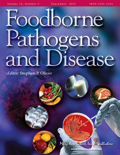
Foodborne Pathogens and Disease
Exploring the intersection of microbiology and public health.Foodborne Pathogens and Disease is a leading peer-reviewed journal, published by MARY ANN LIEBERT, INC, that focuses on the critical field of food safety and microbiology. With a robust ISSN of 1535-3141 and an E-ISSN of 1556-7125, this journal has established itself as a pivotal resource since its inception in 2004. It serves as an essential platform for researchers, professionals, and students dedicated to understanding the risks associated with foodborne pathogens and their impact on public health. The journal holds impressive rankings, being categorized in Q1 for Animal Science and Zoology and Q2 for Applied Microbiology and Biotechnology and Food Science according to the latest quartiles. Additionally, it ranks high within Scopus, occupying the 90th percentile in Agricultural and Biological Sciences (Animal Science and Zoology). Though not an open-access publication, it provides valuable insights and data that contribute to the evolving discourse on food safety, the prevention of foodborne diseases, and the advancement of biotechnology in food science. As it converges towards its 20th anniversary in 2024, Foodborne Pathogens and Disease continues to be an indispensable source of information for those committed to the betterment of food safety and public health.
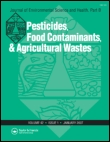
JOURNAL OF ENVIRONMENTAL SCIENCE AND HEALTH PART B-PESTICIDES FOOD CONTAMINANTS AND AGRICULTURAL WASTES
Exploring the intersection of food safety and environmental health.JOURNAL OF ENVIRONMENTAL SCIENCE AND HEALTH PART B-PESTICIDES FOOD CONTAMINANTS AND AGRICULTURAL WASTES, published by Taylor & Francis Inc, stands as a crucial platform for advancing knowledge in the intersection of environmental science, food safety, and agricultural practices. With an ISSN of 0360-1234 and E-ISSN 1532-4109, this journal has been disseminating significant research since 1976 and continues its invaluable contributions through 2024. Recognized in notable quartiles such as Q2 in Food Science and Q3 in both Medicine and Pollution, it reflects a robust academic stature, ranking in the top half of Scopus categories, specifically in Agricultural and Biological Sciences at rank #158/389 and Environmental Science at rank #82/167. This makes it an essential resource for researchers, professionals, and students who are focused on understanding and mitigating the impacts of pesticides, food contaminants, and agricultural waste. Although it is not an open access journal, the depth and quality of its published work offer a wealth of information for those striving to innovate in sustainable practices and public health safety. Engage with the latest findings and discussions that shape the future of environmental health and food science.

Applied Food Research
Innovating Insights in Food SystemsApplied Food Research, published by Elsevier, is an esteemed journal that plays a critical role in advancing the field of Food Science. With an ISSN of 2772-5022, the journal has established itself as a premier outlet for high-quality research, achieving a commendable Q1 ranking in the 2023 Food Science category and a 63rd percentile in Scopus rankings for Agricultural and Biological Sciences. Covering a diverse range of topics from food safety to innovative processing techniques, Applied Food Research seeks to publish pioneering studies that enhance our understanding of food systems and contribute to broader discussions on sustainability and nutrition. As it converges on its fourth year of publication, researchers, professionals, and students alike are encouraged to engage with its content through various open access options, ensuring widespread dissemination of knowledge in a field that is vital to global health and well-being. Operating out of Amsterdam, Netherlands, this journal is poised to be an indispensable resource for anyone dedicated to making significant contributions in the domain of food science.

Current Research in Nutrition and Food Science
Pioneering insights in food safety and dietary health.Current Research in Nutrition and Food Science is a premier academic journal dedicated to advancing knowledge in the fields of nutrition and food science. Published by ENVIRO RESEARCH PUBLISHERS, this journal serves as a critical platform for researchers, professionals, and students to disseminate impactful research findings. With its Q3 ranking in both Food Science and Medicine (miscellaneous) categories for 2023, it reflects its commitment to quality and relevance within these disciplines. The journal operates under an open access model, ensuring that its content is readily available to a global audience, thus promoting collaboration and innovation across various sectors. Covering a wide range of topics from agricultural practices to the biochemical aspects of nutrition, Current Research in Nutrition and Food Science invites contributions that push the boundaries of understanding, addressing contemporary challenges in food safety, dietary health, and nutrition policies. As it continues its journey from 2013 to 2024 and beyond, the journal occupies an essential role in fostering a dialogue among scholars and practitioners, supporting the advancement of science and, ultimately, healthier global communities.
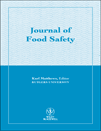
JOURNAL OF FOOD SAFETY
Uncovering vital knowledge in food microbiology.Journal of Food Safety is a premier resource in the field of food science, offering invaluable insights into food safety practices, microbiology, and parasitology. Published by WILEY, this journal has been a pivotal platform for the dissemination of research since its inception. With an impressive impact factor reflecting its esteemed reputation, the journal caters to a diverse audience of researchers, professionals, and students committed to advancing knowledge in food safety. While currently not an open access journal, it still provides essential findings that contribute significantly to the understanding of foodborne pathogens and preventive measures. Recognized in the Q2 and Q3 quartiles across various relevant disciplines, including Food Science, Microbiology, and Parasitology, the Journal of Food Safety continues to uphold high standards in scientific research and education. Researchers are encouraged to submit their manuscripts and engage with groundbreaking studies that are shaping the future of food safety.

Journal of Food Safety and Food Quality-Archiv fur Lebensmittelhygiene
Elevating Food Safety Knowledge for a Healthier Tomorrow.The Journal of Food Safety and Food Quality - Archiv für Lebensmittelhygiene is a crucial publication in the realms of food safety, quality assurance, and hygiene, published by M H SCHAPER GMBH CO KG in Germany. As a respected journal with editions dating back to 1959, it has played an integral role in disseminating research, reviews, and case studies that impact policy and practice within the food science community. Despite being classified in the Q4 category across various domains such as Food Science, Health, Toxicology, and Microbiology as of 2023, its contributions continue to foster critical discussions, innovations, and advancements in understanding food safety standards and practices. The journal does not currently offer open access, a decision that may influence the dissemination of knowledge among researchers and practitioners. However, its archival value and historical insights remain significant for those invested in the scientific and regulatory landscapes of food quality and safety.
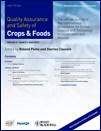
Quality Assurance and Safety of Crops & Foods
Advancing agricultural safety and food quality.Quality Assurance and Safety of Crops & Foods is a leading peer-reviewed journal, published by CODON PUBLICATIONS, dedicated to advancing the fields of Agronomy and Crop Science and Food Science. Since its inception in 2009, this journal has established itself as a crucial platform for researchers, professionals, and students, focusing on the vital intersection of agricultural safety and food quality. With a commendable impact factor and a current Scopus ranking placing it in the top quartiles of its field (Q2 in 2023), it serves as an essential resource for those committed to ensuring the safety and quality of global food supplies. The journal provides open access options to enhance the dissemination and accessibility of research findings, thus fostering collaborative efforts to tackle contemporary challenges in food production and safety. By showcasing innovative methodologies and cutting-edge research, Quality Assurance and Safety of Crops & Foods not only contributes to scientific discourse but also plays a pivotal role in informing policy and practice in sustainable agricultural practices.
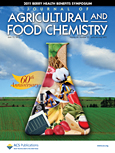
JOURNAL OF AGRICULTURAL AND FOOD CHEMISTRY
Exploring the Chemistry Behind Food Safety and NutritionJOURNAL OF AGRICULTURAL AND FOOD CHEMISTRY, published by the American Chemical Society, serves as a premier platform for disseminating cutting-edge research in the field of agricultural and food chemistry. With an impressive impact factor and ranked in the Q1 quartile for both Agricultural and Biological Sciences and Chemistry categories, this journal is recognized for its high-quality contributions that influence practices in food safety, nutrition, and agricultural productivity. Since its inception in 1953, the journal has dedicated itself to providing valuable insights and innovative approaches to complex challenges facing these intertwined fields. Researchers and professionals in academia and industry alike will find the JOURNAL OF AGRICULTURAL AND FOOD CHEMISTRY to be an essential resource for advancing knowledge and fostering collaboration in agricultural sciences and food chemistry.

Food Frontiers
Navigating New Frontiers in Food InnovationFood Frontiers, an esteemed publication in the Food Science domain, is proudly published by WILEY. Launched as an Open Access journal in 2020, it aims to facilitate the dissemination of high-quality research that influences contemporary food science and technology. The journal, with an E-ISSN of 2643-8429, has rapidly ascended to a Category Quartile ranking of Q1 in the Food Science category as of 2023, and boasts an impressive Scopus rank of #31 out of 389 in Agricultural and Biological Sciences, placing it in the 92nd percentile. The journal's mission is to explore innovative approaches to food production, safety, and sustainability, making it an essential resource for researchers, industry professionals, and students eager to stay at the forefront of food science advancements. With a commitment to open accessibility, Food Frontiers fosters collaboration and knowledge sharing across the globe, addressing the critical challenges and trends in feeding the world sustainably.

Food Quality and Safety
Advancing food science for a safer tomorrow.Food Quality and Safety is a leading academic journal published by Oxford University Press, dedicated to advancing research in the critical field of food science. With an ISSN of 2399-1399 and an E-ISSN of 2399-1402, the journal has gained prestigious recognition, securing a Q1 ranking in the Food Science category as per Scopus rankings, and being positioned at #69 out of 389 in its field, reflecting its influence and reputation within the discipline. Since its transition to Open Access in 2017, the journal has broadened its reach, ensuring that cutting-edge research related to food quality, safety measures, and consumer protection is accessible to researchers, professionals, and students alike. With a commitment to publishing high-quality articles and reviews, the journal addresses contemporary challenges in the food industry and promotes a better understanding of food safety protocols. Based in Oxford, United Kingdom, Food Quality and Safety plays a pivotal role in shaping future research and practices in food science, making it an essential platform for scholars who aim to impact the industry through innovative findings and applied research.